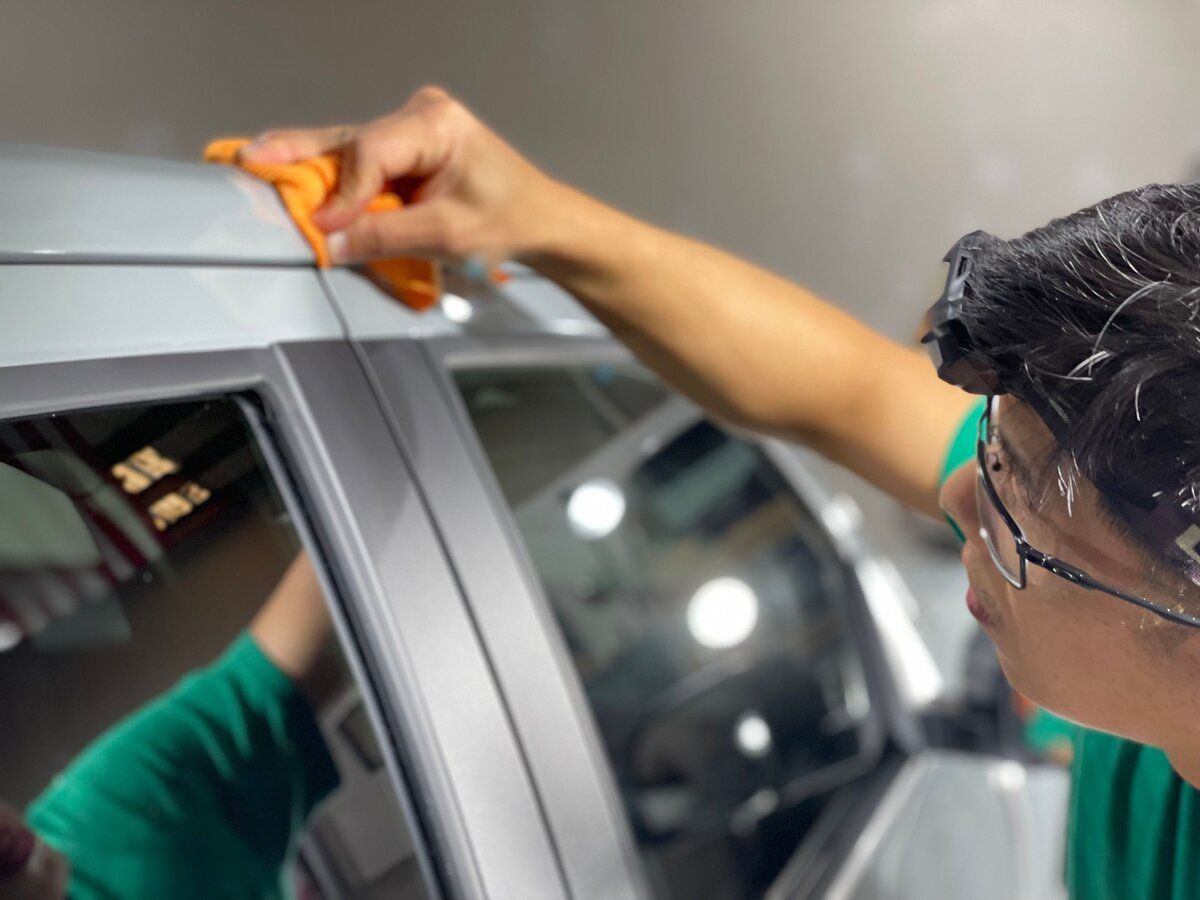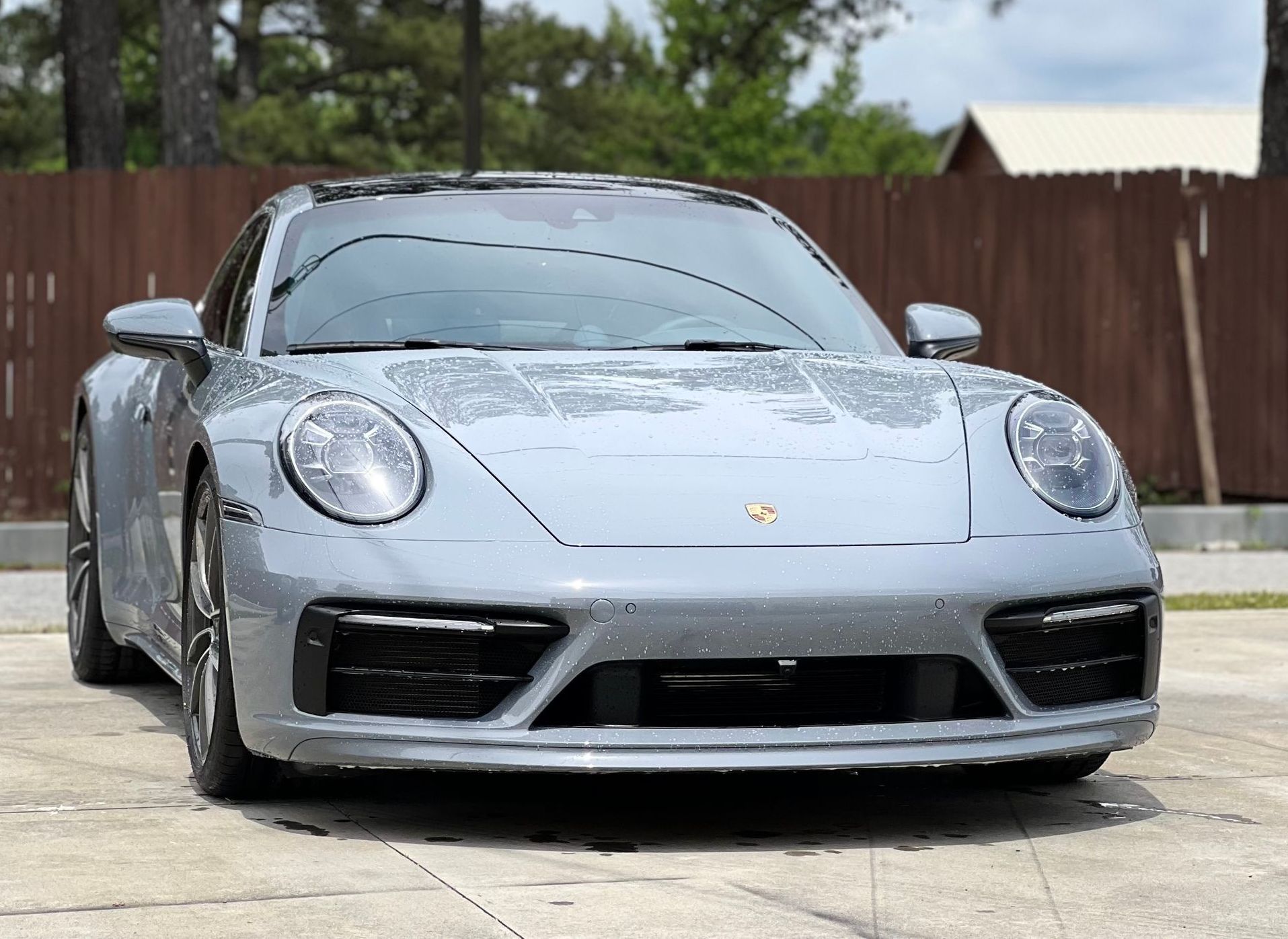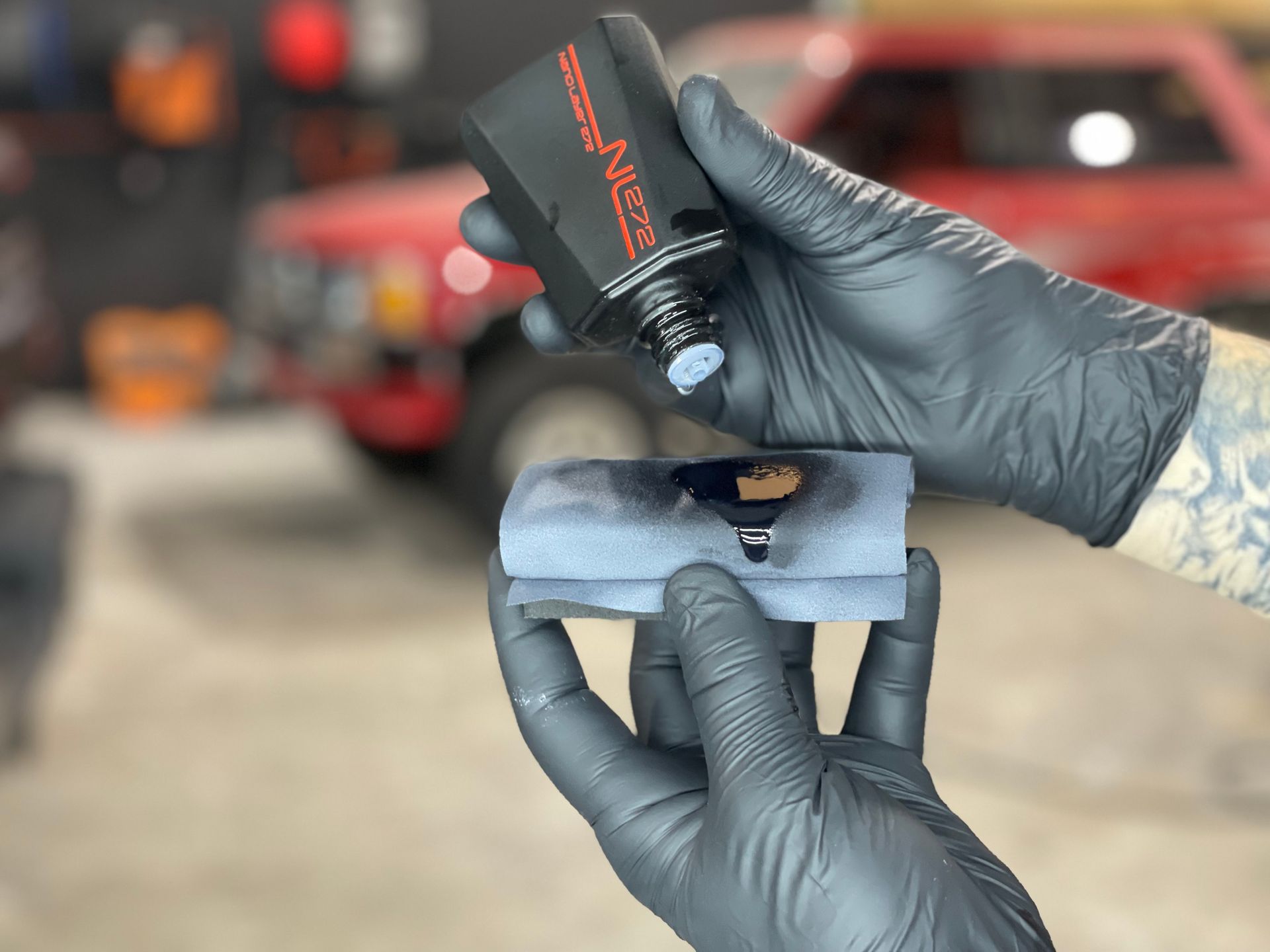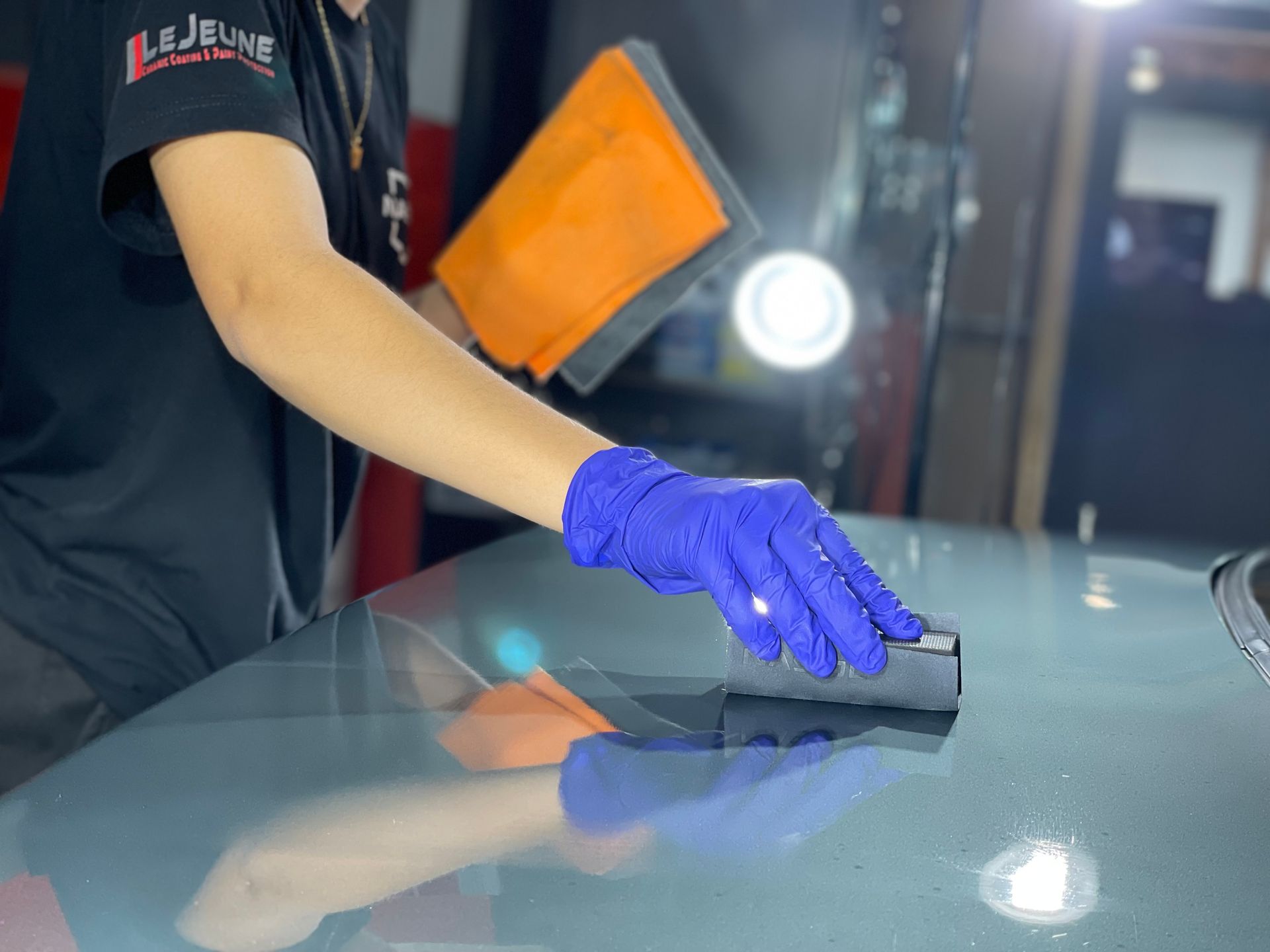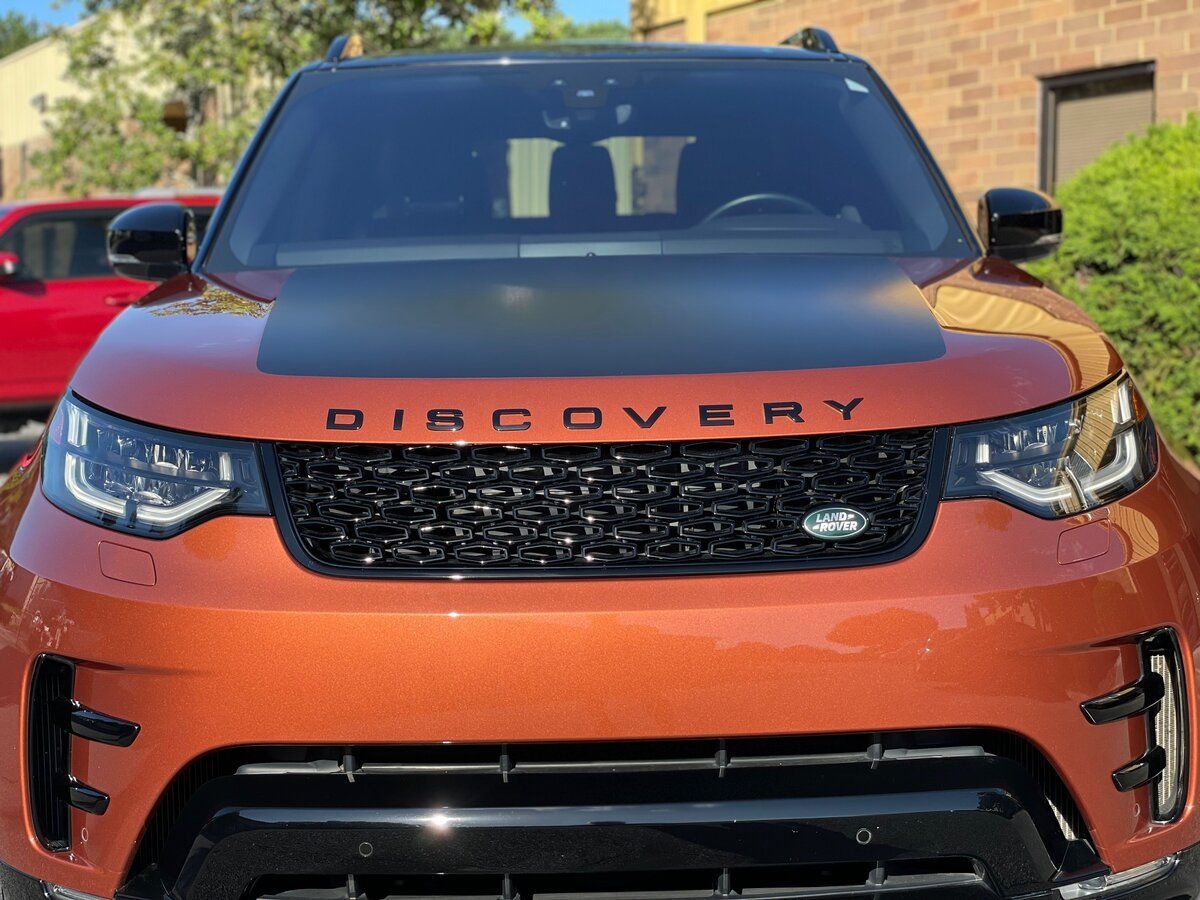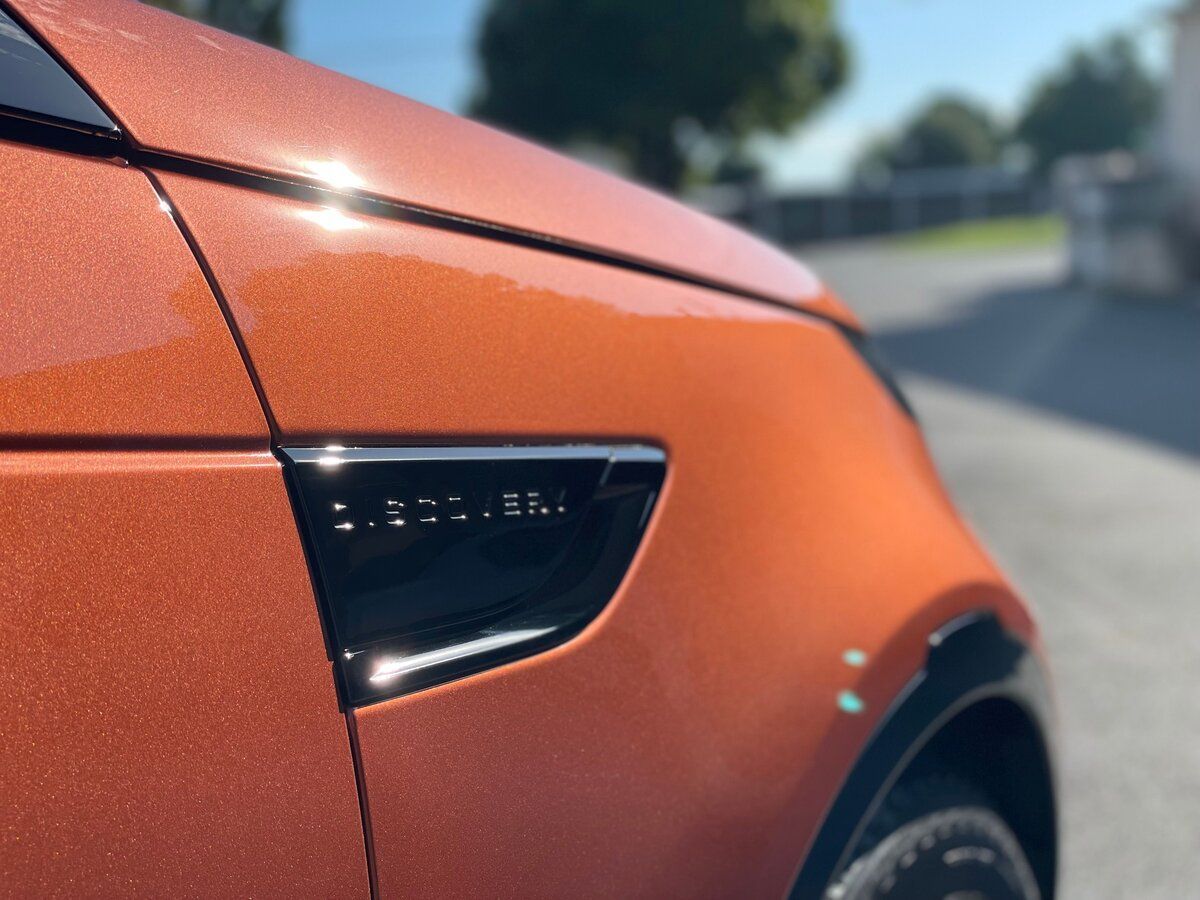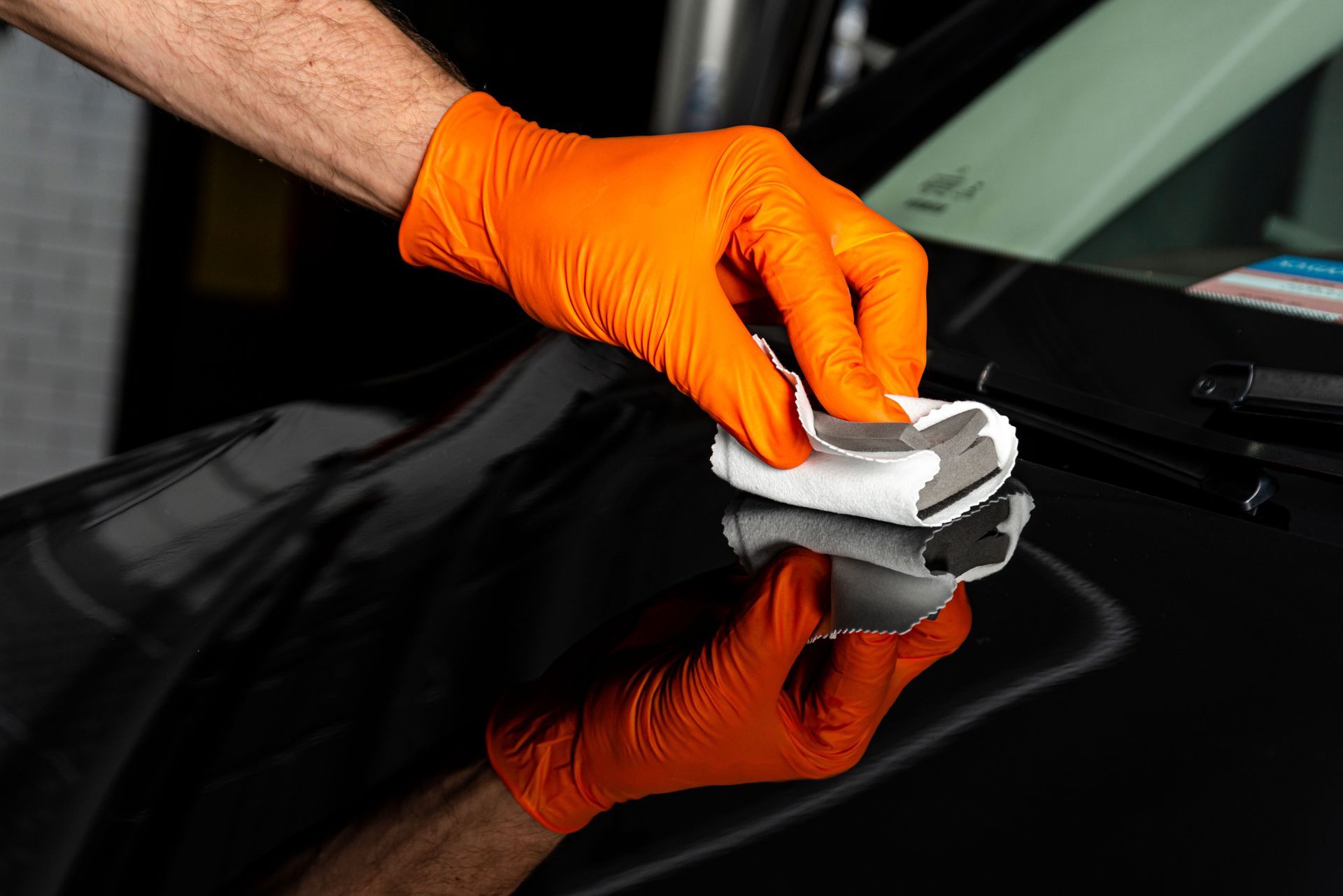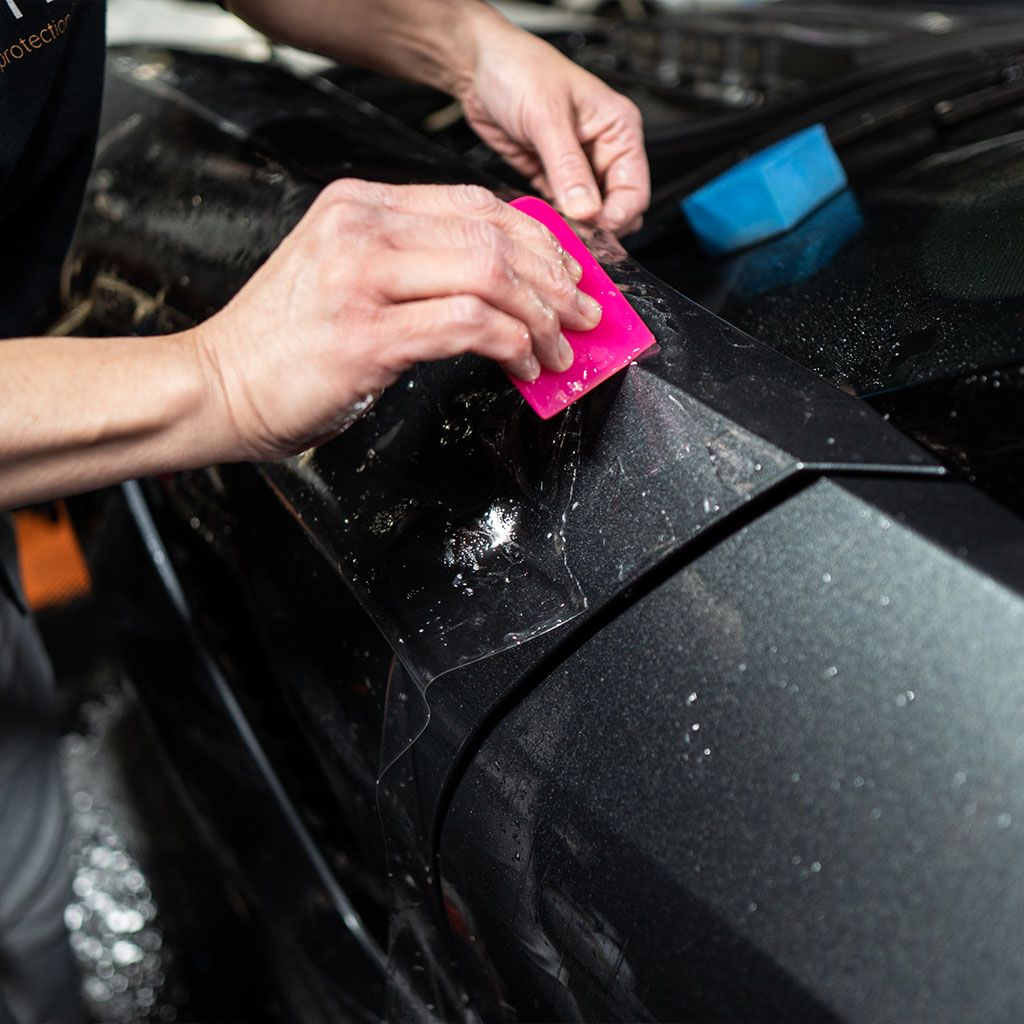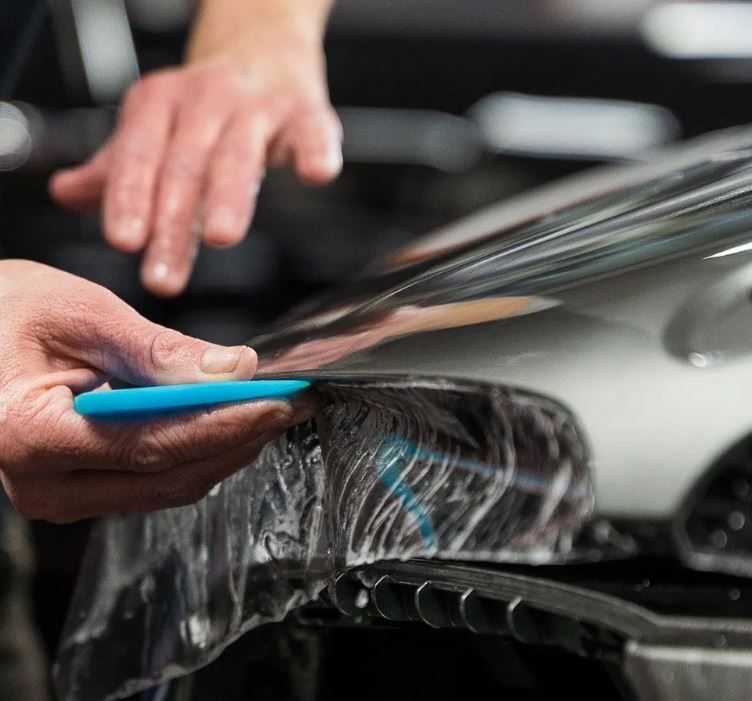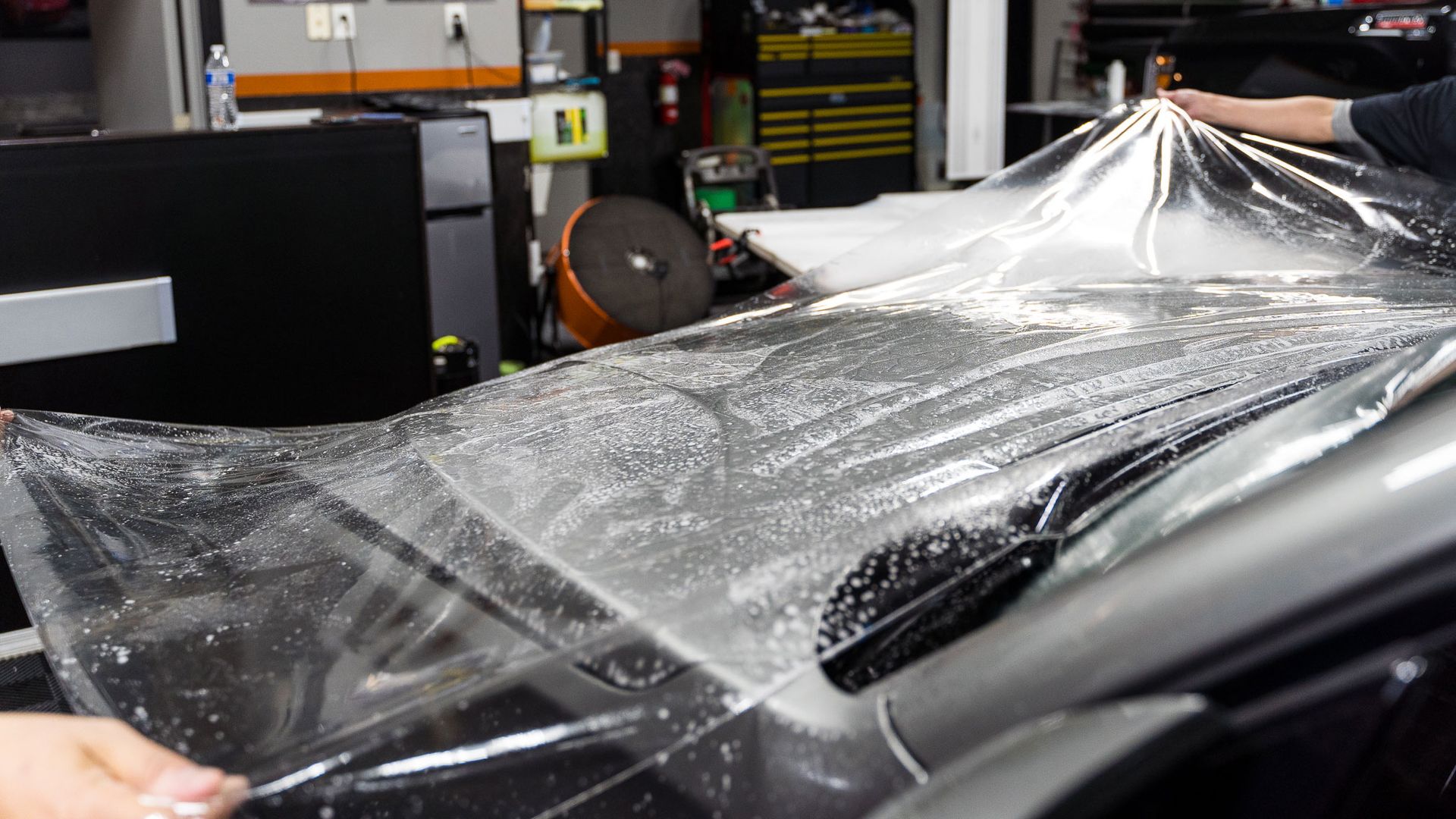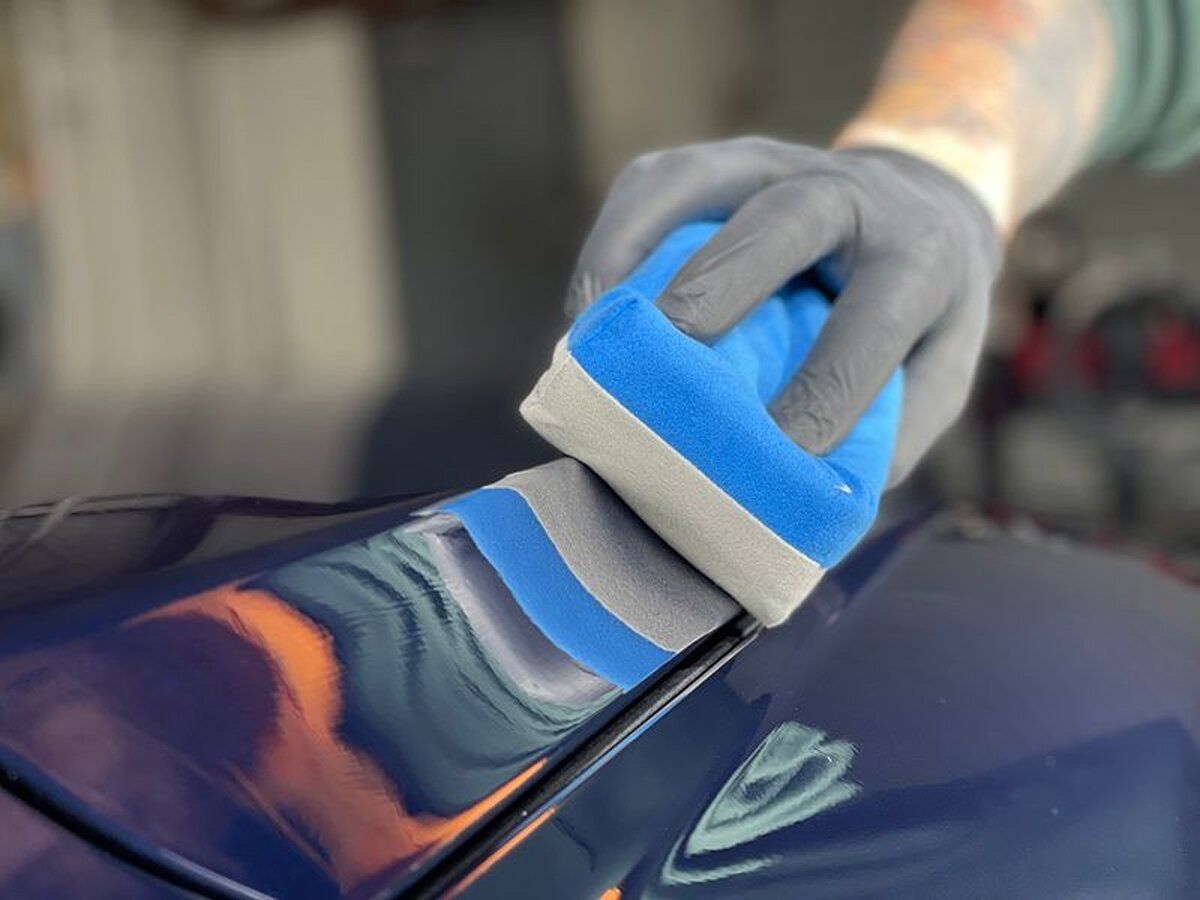Ceramic Coating Solutions: Protect Against Weather-Induced Damage and Paint Aging
GET A QUOTECALL (770) 722-3486
When it comes to keeping our cars looking new, many of us are always on the lookout for the best solution. After all, there’s nothing quite like that fresh, shiny appearance that makes you feel proud every time you walk up to your vehicle. Have you ever noticed how quickly the elements can wear down that sparkle, turning what used to be a gleaming paint job into a dull finish? This is where auto ceramic coating steps in as a game-changer. It not only offers protection but also helps maintain that showroom shine you've grown to love.
Ceramic coating acts as a protective layer on your vehicle's paint, creating a hydrophobic surface that repels water, dirt, and other contaminants that can cause weather-induced damage. By shielding the paint from UV rays, oxidation, and harsh environmental elements, ceramic coatings significantly reduce the aging process of your car’s exterior and maintain its appearance over time.
What is Ceramic Coating?
Ceramic coating is more than just another buff-and-shine solution—it's a sophisticated liquid polymer that gets applied to your vehicle's exterior. Unlike traditional waxes that require frequent reapplication and can wear away quickly, ceramic coatings form a semi-permanent bond with the paint itself. This unique bond creates a protective layer that enhances the longevity and beauty of your car’s surface.
At its core, ceramic coating is crafted using nanotechnology, which enables the formulation to produce an incredibly thin yet effective barrier. This layer repels water, dirt, and contaminants, offering exceptional resistance against harmful elements like UV rays, acid rain, and even pesky bird droppings. Over time, these aggressors can lead to fading and degradation of the paint; having this additional layer of protection becomes pivotal in preserving your vehicle's finish.
Benefits of Using Ceramic Coating
Ceramic coating is a game-changer for vehicle owners who want long-lasting protection and enhanced aesthetics for their cars. Its innovative technology goes beyond surface-level beauty, offering a host of advantages that make it a preferred choice over traditional waxing. Below, we break down the key benefits of ceramic coating into easily digestible points.
- Long-Lasting Protection Against Environmental Damage: Ceramic coating forms a durable bond with your car's paint, providing a robust layer of protection against UV rays, dirt, and contaminants. This barrier helps prevent fading and deterioration over time, ensuring your vehicle maintains its fresh, vibrant look. Unlike traditional waxes that wear off in months, ceramic coatings last for years, reducing the need for frequent reapplications.
- Advanced Gloss and Hydrophobic Features: The silicon dioxide (SiO2) in ceramic coatings solidifies into a glass-like finish, significantly enhancing your vehicle's glossiness. This sleek finish doesn’t just look great—it also repels water effectively, making droplets bead up and roll off the surface effortlessly. The hydrophobic properties ensure a streak-free appearance, even during rainy weather, while making cleaning much easier.
- Enhanced Aesthetic Appeal Over Time: Ceramic coatings provide more than just short-term shine—they enhance the reflective properties of your paint, creating depth and clarity that amplifies the car's beauty. Vehicle enthusiasts often share stories of how their older cars maintain a showroom-like sparkle thanks to this protective solution. The result is a sophisticated, polished look that turns heads wherever you go.
- Effortless Maintenance and Cleaning: Thanks to the hydrophobic nature of ceramic coatings, dirt and grime have a harder time sticking to your car's surface. This means a simple rinse often suffices to keep your vehicle clean, reducing the need for intensive scrubbing or harsh cleaning products. Many ceramic coating users report a significant reduction in cleaning time, making maintenance less of a chore and more of a breeze.
- Protection Against Oxidation and Weathering: By forming a semi-permanent barrier, ceramic coatings safeguard your car’s paint from oxidation caused by prolonged sun exposure. This protective layer minimizes the risk of etching and staining from environmental pollutants, keeping your vehicle’s finish vibrant and intact. Whether parked under harsh sunlight or exposed to adverse weather, ceramic coatings help your car endure with grace.
Ceramic coating is more than just a trend—it’s an investment in preserving the beauty and integrity of your car for years to come. From providing superior protection to elevating aesthetic appeal, this innovative solution offers unparalleled benefits that make it an essential for car enthusiasts. Take the next step and explore how ceramic coating can transform your vehicle’s appearance and maintenance routine today!
How to Apply Ceramic Coating
Applying ceramic coating to your vehicle doesn’t have to feel like an intimidating task; it can be a satisfying and rewarding experience if done properly. The key is in preparation and understanding that every step plays a vital role in achieving a long-lasting protective layer on your paintwork.
Step I: Prepare the Surface
Your first business should be to wash your car thoroughly. This means using a high-quality automotive soap to remove any surface dirt or grime lingering on the exterior. Once washed, treat the surface with a clay bar. This step is essential as it pulls out any embedded contaminants, such as tree sap, industrial fallout, and rail dust. Imagine applying a fresh coat of wax over a rough surface—nearly impossible! Leftover contamination can prevent the ceramic coating from bonding correctly, so don’t skip this pivotal moment.
Step II: Polish the Paint
If your car’s paint has any swirls or minor scratches, consider polishing them out now. This step is about getting that surface smooth as silk—think about it like preparing the canvas before painting; any imperfections will disrupt the final product. A polish not only removes these blemishes but also enhances glossiness, making it an important part of preparing for ceramic coating. After polishing, clean the surface again using isopropyl alcohol (IPA). This action removes any residual oils and residues from previous products used during polishing. It's crucial; think of it as priming a wall before you apply a new coat of paint.
Step III: Apply the Ceramic Coating
Start by dripping a few drops of the ceramic coating onto an applicator pad—this little instrument is your brush in this painting endeavor. As you begin spreading it over a small section of the car in a crisscross pattern, patience is essential; don't rush! After just a few moments, you'll notice something magical—a shimmering flash indicating that it's time to buff it off with a microfiber towel. Continue this method panel by panel to ensure thorough coverage across your vehicle's exterior. Many products allow for multiple layers of coating; however, be sure to adhere to the specific coating instructions regarding curing times between layers.
By focusing on each detail during application, you set your vehicle up for long-lasting beauty and durability.
Ceramic Coating vs. Traditional Wax
At first glance, both ceramic coating and traditional wax appear to serve the same purpose: protecting your vehicle's paint while enhancing its shine. However, a deeper understanding reveals crucial differences that can dramatically impact your car's longevity and appearance. Traditional wax, a natural or synthetic product, merely offers a temporary layer of protection. It's generally easy to apply but requires frequent reapplication, making it a short-term solution for vehicle care. In contrast, ceramic coating consists of a complex chemical polymer that creates a strong bond with the vehicle's paint, forming a long-lasting protective layer.
Durability
When it comes to durability, ceramic coatings simply outshine traditional wax by miles. Wax typically lasts only a few months due to exposure to weather elements and wear from washing. This fleeting nature means you'll find yourself reapplying wax repeatedly throughout the year. On the other hand, ceramic coatings can last several years—often between two and five years—depending on the quality of the product and how well it is maintained. This significant difference in longevity means less labor on your part in the long run. But durability isn’t everything; protection is equally vital.
Protection
When discussing protection, ceramic coating again takes the lead. It actively protects against harmful UV rays that can cause paint fading and oxidation over time. Additionally, this high-quality coating resists environmental contaminants that could mar your vehicle’s surface. Traditional wax does provide some level of defense against water spots and minor contaminants; however, its effectiveness pales compared to that of ceramic coatings. Wax lacks the resilient characteristics needed to combat more severe environmental threats.
If you're seeking long-term protection with fewer maintenance requirements, ceramic coating proves itself as the superior choice for discerning car owners who understand the importance of investing in their vehicle's appearance. Considering these factors will guide you toward making an informed choice that aligns with your vehicle care strategy.
Maintaining a Ceramic-Coated Car
Even though ceramic coatings are known for their impressive longevity, they still demand a touch of care to maximize their effectiveness and lifespan. Regular maintenance enhances the appearance of your vehicle and reinforces the protective barrier that the ceramic coating provides against environmental elements. Think of it like the way you might take care of your favorite piece of clothing or investment; giving it some TLC ensures that it stays looking fresh and vibrant for longer.
- Regular Washing: The foundation of maintaining your ceramic-coated car lies in regular washing with a gentle touch. Using a pH-neutral car shampoo is recommended—this type is formulated to be safe on your coating without causing degradation. Opting for microfiber wash mitts helps prevent scratches that can mar the surface; think of them as the softest blankets cradling your car's finish. Aim to wash your vehicle every two weeks, especially if it's frequently exposed to high pollen, dust, or road grime. Regular washing helps remove contaminants that can bond to the surface and dull the coat's shine over time.
- Avoid Harsh Chemicals: Another significant aspect of maintenance is keeping harsh chemicals at bay. Products like bleach, ammonia-based cleaners, or heavy degreasers can undermine the ceramic coating’s abilities, leading to diminished protection against UV rays and corrosion. Instead, stick to cleaners specifically designed for ceramic-coated vehicles. This specialized approach is akin to using the right tools for a job—you wouldn’t use a hammer when you really need a screwdriver! Notably, anything acidic or caustic should be kept away from your ceramic-coated car. A good rule of thumb is to read product labels and look out for phrases like "safe for coated surfaces."
- Annual Inspections: Lastly, don’t underestimate the value of annual inspections of your ceramic coating. During these check-ups, look for any signs of wear or degradation that might require attention. You might realize that even the toughest coatings have weak spots—small areas where debris may have accumulated or where environmental factors could have taken their toll. Performing touch-ups ensures that any compromised sections regain their protective abilities. Think about it like patching up a well-loved quilt—just as those repairs keep it functional and cozy, so too do they help keep your vehicle in peak condition.
By incorporating these simple but effective maintenance routines into your car care regimen, you'll not only protect your investment but also lay the groundwork for understanding its true value moving forward.
Is Ceramic Coating Worth It?
The decision to apply a ceramic coating hinges on understanding the cost versus value argument. At first glance, the price tag for ceramic coatings can be intimidating. Often higher than traditional waxing methods, the investment might seem hefty until you consider the long-term benefits it offers. For instance, many owners find that their vehicles maintain a showroom shine while being protected against corrosive substances like road salt and bird droppings.
One of the compelling aspects of ceramic coatings is their ability to fend off environmental contaminants, UV damage, and even minor chemical stains. Imagine owning a vehicle where the paint continues to look new even when Mother Nature throws her worst at it. This is not merely wishful thinking—many car owners attest that with proper application and maintenance, their vehicles' aesthetics remain impeccable for years. Over time, this resilience translates to substantial savings on repainting and repair costs compared to cars that lack such protection.
Moreover, if you've ever spent an entire weekend buffing and re-waxing your car, you understand that time is precious. A ceramic-coated finish reduces maintenance significantly. Instead of regular waxing sessions, most ceramic coatings provide robust protective layers that enhance sheen with minimal effort. Yet, it's important to acknowledge the flip side. If joy comes from knowing every inch of your car gets lovingly waxed and polished by your own hands, then perhaps ceramics aren't for you. Traditional waxing might be more fulfilling and cost-effective if you're meticulous about maintenance routines. Think about what aspects of car care bring you satisfaction; your personal preferences play a crucial role in this decision.
As you weigh these various elements, it becomes clearer how individual lifestyles and expectations will shape your judgment on whether ceramic coating makes sense for you or not. In the end, evaluating the worth of a ceramic coating for your vehicle may boil down to balancing your desires for protection and aesthetics with your personal approach to car care. Prioritize what matters most to you as you make this important choice.
Unmatched Ceramic Coating Services in Marietta, GA
Protect and enhance your vehicle with LeJeune Ceramic Coating & Paint Protection’s
premium ceramic coating services in Marietta, GA. Our expert team delivers cutting-edge solutions to shield your car from harmful elements while giving it a flawless, high-gloss finish that turns heads. With long-lasting durability and exceptional hydrophobic properties, your vehicle stays cleaner, shinier, and easier to maintain. Trust LeJeune Ceramic Coating & Paint Protection to preserve your investment and keep your car looking its absolute best. Contact us today to schedule your ceramic coating service and experience the difference! Call (770) 722-3486 to get started!
